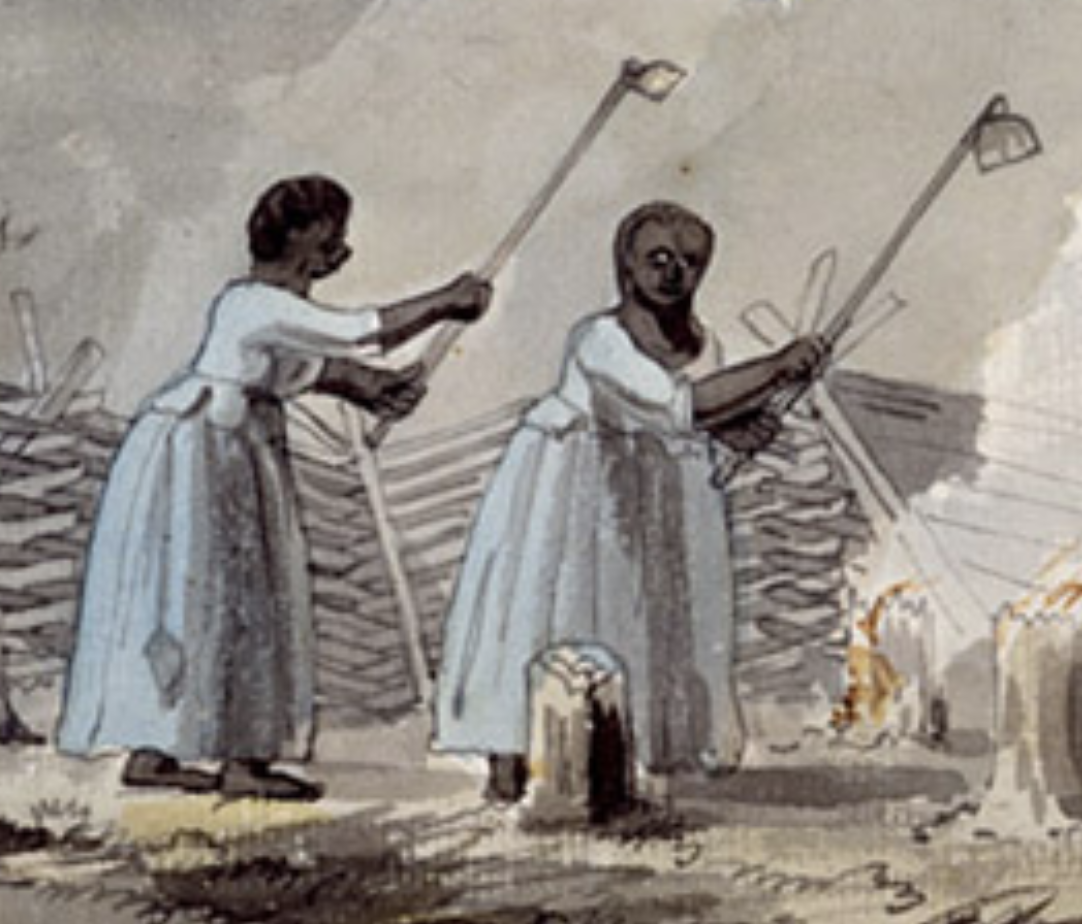The 18thc is a time of truly beautiful clothing for women, of fine damasks and hand-painted silks and elegantly printed cottons, and I’ve enjoyed sharing many of the garments that my past heroines might have worn.
But Mary Emmons (my heroine in The Secret Wife of Aaron Burr) is a different kind of heroine, with different clothing. As an enslaved woman, she had no choice in her dress. She wore what was provided for her.
When Mary was first brought to the Prevost household in New Jersey, she was given second-hand clothing that would have been similar to what a lower-class white woman would also have worn: a jacket or bodice and a petticoat (skirt) that would have been worn over a plain linen shift, and stays to support and contain her body. An apron tied over the jacket gave it a more defined waistline. She would have kept her hair tightly braided or coiled into a knot and pinned high on her head, and covered with a plain white linen cap. A neck kerchief, socks, and shoes that fastened with laces, not buckles, would have completed her wardrobe. She would have been expected to wash and patch and darn these clothes as needed to present a tidy appearance, and wear them until they disintegrated.
While there is very little surviving clothing with a history of enslaved ownership, a wealth of detailed descriptions exist in runaway advertisements - descriptions that were meant to help identify the runaway, but also leave snapshops of everything an enslaved person was wearing when he or she self-emancipated.
Because 18thc tailors made clothes for enslaved people as well as silk suits for fine gentlemen, the tailors of the Historic Trades program at Colonial Williamsburg recreated the woman's jacket, above, based partly on runaway ads. Entirely stitched by hand, the jacket is made of a coarse blend of undyed wool and linen (called linsey-woolsey, or Virginia cloth, or plantation cloth), which could have been woven in America, possibly by an enslaved weaver in a larger household. It's lined with osnaburg, a rough blend of flax and linen. Since both wool and linen are naturally fire resistant (they smolder instead of bursting into flame) it would have been worn by women like Mary who worked around the open hearths of kitchens.
The sleeves are narrow and fitted but short, to stay clear of messy tasks. The back of the jacket has skirts divided into panels to flare over a fuller petticoat, and to provide ease of motion. The zig-zagging front lacing mimics the lacing of stays (18thc corsets), and could have offered a bit of support for the wearer's breasts. The laced front was also easily adjustable to accommodate pregnancy or other changes in a woman’s body. Lacing was the most inexpensive kind of fastening, too, cheaper than either buttons or pins. The twisted cord of the lacing passed through reinforced eyelets, middle right.
The wearer could have added her own personality with a bright printed kerchief that she might have bought or bartered for, or added a strand of glass beads or earrings. Others might have worn a handmade pendant as a precious, private memento or talisman tucked inside her clothing, where its presence would be an unseen comfort, as Mary did.
What fascinates me is that the basic style and lines of this jacket could have been worn by a woman of any rank. The cost and value of 18thc clothing lay not in the labor or design, but in the textiles. The enslaved women at work with their hoes, right, are wearing jackets that are similar in shape to the reproduction above. Yet if this same basic style of front-opening jacket with narrow sleeves and flaring back panels is made of silk or imported printed cotton, like this jacket and matching petticoat, it becomes the height of European fashion. Worn over whalebone stays, fastened with imported pins, trimmed silk rosette at the neckline, and worn with a lace kerchief, the jacket could have been worn by Theodosia Prevost, or one of the ladies of the elite Schuyler family in I, Eliza Hamilton.
Similar in style, yet so far apart.
Many thanks to Mark Hutter, master in the tailoring trade at Colonial Williamsburg, for his assistance with this post.
Top and right: Reproduction jacket made by the tailors of Colonial Williamsburg. Photos ©2018 Susan Holloway Scott.
Lower right: Detail, An Overseer Doing His Duty, by Benjamin Henry Latrobe, 1798, Maryland Historical Society.
My new historical novel, The Secret Wife of Aaron Burr, is now available everywhere, in stores and online. Order here.




